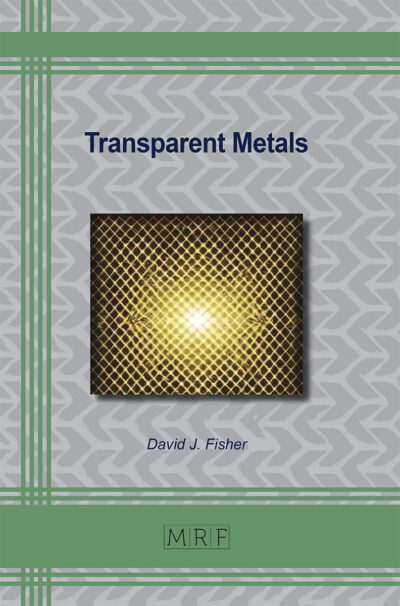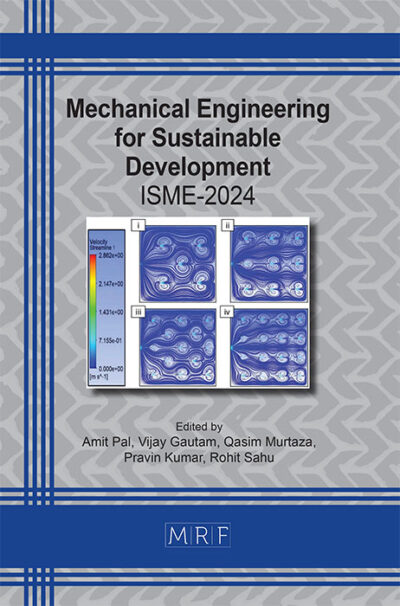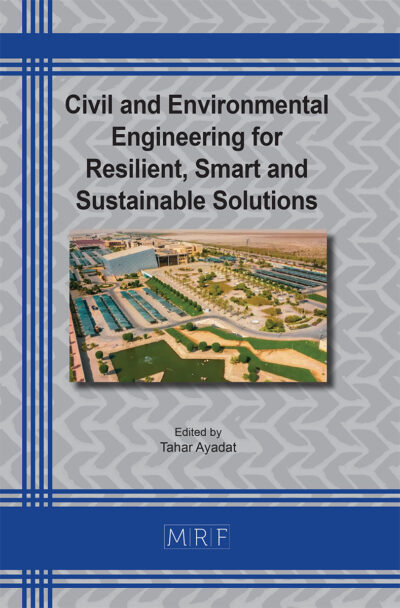A green-magnetic approach to textile wastewater decolorization using nickel ferrite-enhanced activated carbon from pistachio shells
Raouf HASSAN, Reda. S. SALAMA, Bushra ISMAIL, Ahmad K. BADAWI
Abstract. In the pursuit of eco-friendly solutions for textile wastewater treatment, this study presents a green magnetic adsorbent material synthesized from pistachio shell-derived activated carbon-supported by modified nickel ferrite (NiFe2O4/AC). The research explores the material’s structural, morphological, and chemical properties through a comprehensive characterization including XRD, TEM, and SEM. XRD analysis confirmed the crystalline structure of the nickel ferrite nanoparticles with an average crystallite size of 12.4 nm. TEM and SEM images revealed a uniform distribution of nanoparticles on the porous activated carbon matrix, which is critical for maximizing the adsorptive capacity and facilitating magnetic separation. These structural features contribute to the composite’s high adsorption efficiency and recyclability. The adsorption performance is evaluated using various parameters including pH, adsorbent dosage, contact time, and stirring rate, and the results demonstrate its efficacy in removing colorants from textile wastewater. The NiFe2O4/AC magnetic nanocomposite exhibits remarkable adsorption abilities, leading to the complete decolorization of textile wastewater when utilized under optimal conditions, including a pH of 9, a contact time of 60 min, an adsorbent dosage of 0.8 gm, and a stirring rate of 150 rpm. This innovative green adsorbent holds great promise as an environmentally responsible and cost-effective solution for the textile industry’s wastewater treatment needs. Its unique combination of renewable raw materials and advanced adsorption properties represents a significant step toward sustainable water purification and pollution control.
Keywords
Green Magnetic Adsorbent, Renewable Raw Materials, Color Removal, Wastewater Treatment, Nickel Ferrites, Activated Carbon
Published online 2/25/2025, 10 pages
Copyright © 2025 by the author(s)
Published under license by Materials Research Forum LLC., Millersville PA, USA
Citation: Raouf HASSAN, Reda. S. SALAMA, Bushra ISMAIL, Ahmad K. BADAWI, A green-magnetic approach to textile wastewater decolorization using nickel ferrite-enhanced activated carbon from pistachio shells, Materials Research Proceedings, Vol. 48, pp 859-868, 2025
DOI: https://doi.org/10.21741/9781644903414-93
The article was published as article 93 of the book Civil and Environmental Engineering for Resilient, Smart and Sustainable Solutions
![]() Content from this work may be used under the terms of the Creative Commons Attribution 3.0 license. Any further distribution of this work must maintain attribution to the author(s) and the title of the work, journal citation and DOI.
Content from this work may be used under the terms of the Creative Commons Attribution 3.0 license. Any further distribution of this work must maintain attribution to the author(s) and the title of the work, journal citation and DOI.
References
[1] Khatri, J., et al., Advanced oxidation processes based on zero-valent aluminium for treating textile wastewater. Chemical Engineering Journal, 2018. 348: p. 67-73 %@ 1385-8947. https://doi.org/10.1016/j.cej.2018.04.074
[2] Lellis, B., et al., Effects of textile dyes on health and the environment and bioremediation potential of living organisms. Biotechnology Research and Innovation, 2452-0721, 2019. https://doi.org/10.1016/j.biori.2019.09.001
[3] Badawi, A.K., E.S. Bakhoum, and K. Zaher, Sustainable evaluation of using nano zero-valent iron and activated carbon for real textile effluent remediation. Arab J Sci Eng, 2021. 46(11): p. 10365-10380. https://doi.org/10.1007/s13369-021-05349-5
[4] Tavangar, T., et al., Textile waste, dyes/inorganic salts separation of cerium oxide-loaded loose nanofiltration polyethersulfone membranes. Chemical Engineering Journal, 2020. 385: p. 123787 %@ 1385-8947. https://doi.org/10.1016/j.cej.2019.123787
[5] Noman, M., et al., Use of biogenic copper nanoparticles synthesized from a native Escherichia sp. as photocatalysts for azo dye degradation and treatment of textile effluents. Environmental Pollution, 2020. 257: p. 113514 %@ 0269-7491. https://doi.org/10.1016/j.envpol.2019.113514
[6] Guesmi, A., et al., Disinfection of corona and myriad viruses in water by non-thermal plasma: a review. Environmental Science and Pollution Research, 2022. 29(37): p. 55321-55335 %@ 0944-1344. https://doi.org/10.1007/s11356-022-21160-7
[7] Baaloudj, O., et al., Polyaniline/Bi12TiO20 Hybrid System for Cefixime Removal by Combining Adsorption and Photocatalytic Degradation. ChemEngineering, 2023. 7(1): p. 4 %@ 2305-7084. https://doi.org/10.3390/chemengineering7010004
[8] Fahim, A.K.B.a.I., A critical review on green corrosion inhibitors based on plant extracts: Advances and potential presence in the market. International Journal of Corrosion and Scale Inhibition, 2021. 10(4): p. 1385-1406. https://doi.org/10.17675/2305-6894-2021-10-4-2
[9] Taha, A. and S. Daffalla, Biochar Derived from Palm Waste Supported Greenly Synthesized MnO2 Nanoparticles as a Novel Adsorbent for Wastewater Treatment. Catalysts, 2023. 13(2): p. 451 %@ 2073-4344. https://doi.org/10.3390/catal13020451
[10] Mater, Y., et al., ANN-Python prediction model for the compressive strength of green concrete. Construction Innovation, 2023. 23(2): p. 340-359 %@ 1471-4175. https://doi.org/10.1108/CI-08-2021-0145
[11] Badawi, A.K., R.S. Salama, and M.M.M. Mostafa, Natural-based coagulants/flocculants as sustainable market-valued products for industrial wastewater treatment: a review of recent developments. RSC Advances, 2023. 13(28): p. 19335-19355. https://doi.org/10.1039/D3RA01999C
[12] Gouda, M.S., et al., Nickel and cobalt oxides supported on activated carbon derived from willow catkin for efficient supercapacitor electrode. Journal of Energy Storage, 2023. 61: p. 106806 %@ 2352-152X. https://doi.org/10.1016/j.est.2023.106806
[13] A.F. Hassan, H. Elhadidy, Production of activated carbons from waste carpets and its application in methylene blue adsorption: kinetic and thermodynamic studies, J. Environ. Chem. Eng., 5 (1) (2017), pp. 955-963 https://doi.org/10.1016/j.jece.2017.01.003
[14] Q. Xue, J.S. Li, P. Wang, L. Liu, Z.Z. Li, Removal of heavy metals from landfill leachate using municipal solid waste incineration fly ash as adsorbent Clean. Soil, Air, Water, 42 (11) (2014), pp. 1626-1631 https://doi.org/10.1002/clen.201300619
[15] S. Wong, Y. Lee, N. Ngadi, I.M. Inuwa, N.B. Mohamed, Synthesis of activated carbon from spent tea leaves for aspirin removal Chin. J. Chem. Eng. (2017), 10.1016/j.cjche.2017.11.004 https://doi.org/10.1016/j.cjche.2017.11.004
[16] J.-H. Lin, S.-B. Wang, An effective route to transform scrap tire carbons into highly-pure activated carbons with a high adsorption capacity of ethylene blue through thermal and chemical treatments, Environ. Technol. Innovat., 8 (2017), pp. 17-27 https://doi.org/10.1016/j.eti.2017.03.004
[17] N.K. Egun, The waste to wealth concept: waste market operation in Delta State, Nigeria Greener J. Soc. Sci., 2 (6) (2012), pp. 206-212 https://doi.org/10.15580/GJSS.2012.6.110112191
[18] Saleh, T.S., et al., Design and development of novel composites containing nickel ferrites supported on activated carbon derived from agricultural wastes and its application in water remediation. Materials, 2023. 16(6): p. 2170 %@ 1996-1944. https://doi.org/10.3390/ma16062170
[19] Prabakar, A.C., et al., Exploring Structural, Morphological, and Magnetic Properties of Zinc Nickel Ferrites Systems Nanocomposites. 2020.
[20] Gratuito, M.K.B., et al., Production of activated carbon from coconut shell: Optimization using response surface methodology. Bioresource technology, 2008. 99(11): p. 4887-4895 %@ 0960-8524. https://doi.org/10.1016/j.biortech.2007.09.042
[21] Naushad, M., et al., Nickel ferrite bearing nitrogen-doped mesoporous carbon as efficient adsorbent for the removal of highly toxic metal ion from aqueous medium. Chemical Engineering Journal, 2017. 330: p. 1351-1360 %@ 1385-8947. https://doi.org/10.1016/j.cej.2017.08.079












